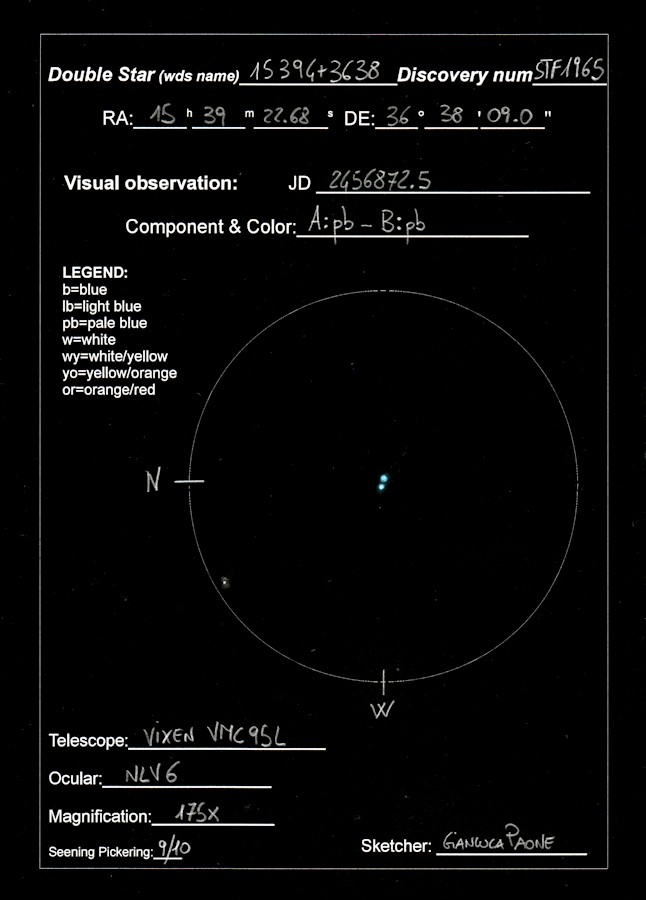
Object name: STF 1965
Object type: Double Star
Location: Marina di Cerveteri (IT) – 12 02 44.3E, 41 58 52.9N
Date: 2014-08-05
Media: graphite pencil & pastel
Equipment: 95mm VMC
—
Gianluca Paone
Astronomia Sotto il Lampione – Forum

Object name: STF 1965
Object type: Double Star
Location: Marina di Cerveteri (IT) – 12 02 44.3E, 41 58 52.9N
Date: 2014-08-05
Media: graphite pencil & pastel
Equipment: 95mm VMC
—
Gianluca Paone
Astronomia Sotto il Lampione – Forum
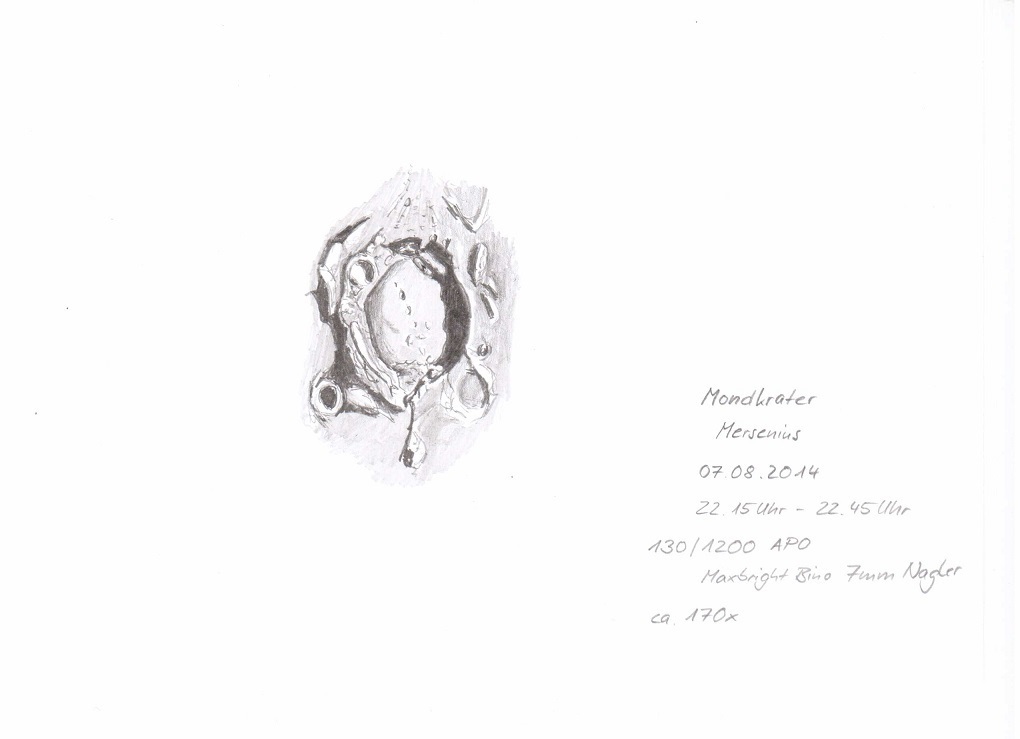
Hello,
After some weeks during the “White nights” without a look in the sky, I started observation at the 7th August with my new 130/1200 Aspherical Doublet Apochromat (it was planned by Ralf Mündlein and me in the last two years) the planet. The air was quite well and the conditions were warm and dry.
A nice crater with some little impacts and mountains at the bottom took my attention. So I made a drawing of this view. I hope you like the “Mersenius”.with it´s nice landscape.
CS Uwe
Object: Moon
Object Name: Crater Mersenius
Telescope: 130/1200 Aspherical Doublet Apochromat
Eyepiece: 7mm Nagler / Maxbright Binocular
Magnification: about 170x
Location: near Tauberbischofsheim Germany
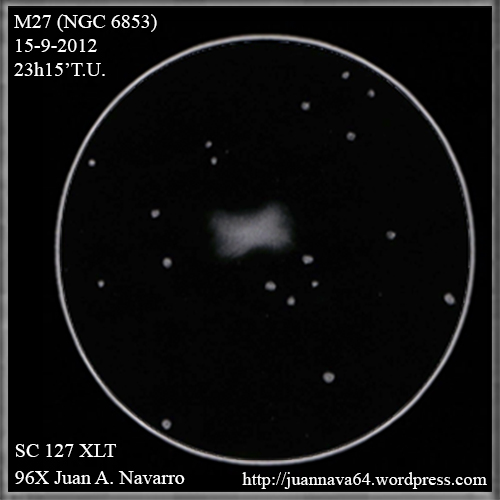
Object Name: (Dumbbel Nebula M27 / NGC 6853)
Object Type: (Nebula)
Location: (Bercedo (Burgos) – Spain)
Date: (2012-09-15 / 23h 15m UT)
Media: White paper, 4B, 2B y HB graphite pencil, scanned and inverted with Photoshop
Telescope: Celestron OMNI 127 XLT (Smith-Cassegrain 5”)
Eyepiece: Baader Hyperion 13mm
Transparency: Clear, Rural Skies.
Location Constellation: Vulpecula
assessments: Dumbbel nebula appears a manner reminiscent even hourglass, but as if it had moved from side to side and left as a halo (something like a horizontal X but faded)
For more details of my observation you can visit my blog:
http://juannava64.wordpress.com/2012/09/24/observacion-m27-nebulosa-dumbbel/
Thank you and best regards.
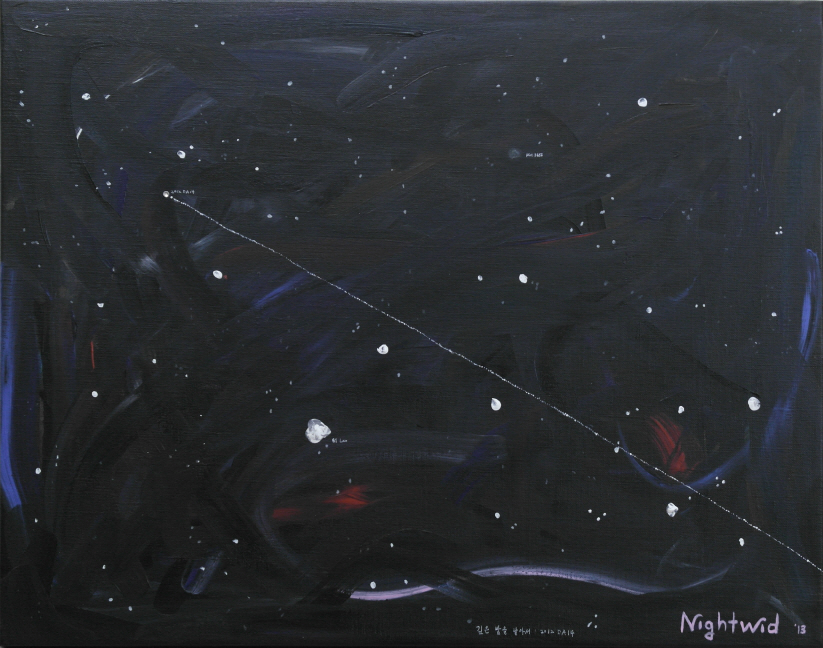
It is my first time observation of asteroid.
The tiny stone go by the universe slowly..
It is so cute!!!
Object Name : 2014DA14
Object Type : Asteroid
Location : S. Korea
Date : Feb. 16, 2013
Equipment : Discovery 15″ Dob
Media : White canvas, Acrylic color, crystal beads
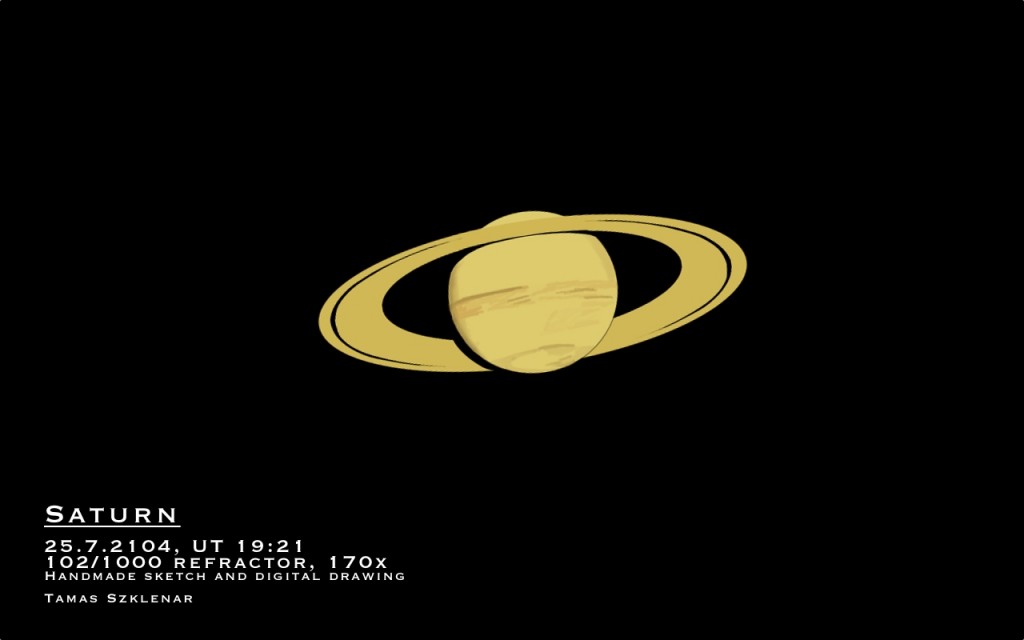
– Object name: Saturn
– Object type: planet
– Location: Tarján, Hungary
– Date: 25.7.2014., 19:21-19:37 UT
– Media: sketch with graphite pencil, finished with a drawing software
After weeks of cloudy weather I was finally able to make a sketch about this beatiful planet.
The drawing and the writing of my notes took approximately 15 minutes. The skies transparency was quite good, but the air conditions were bad, so I had to wait long to see some details. I used a 102/1000 Celestron OmniXLT refractor and 170x magnification during the observation.
After the sketch was done I watched some other object on the sky, so I finished my draw at home, using my laptop.
I hope you like it.
Tamas
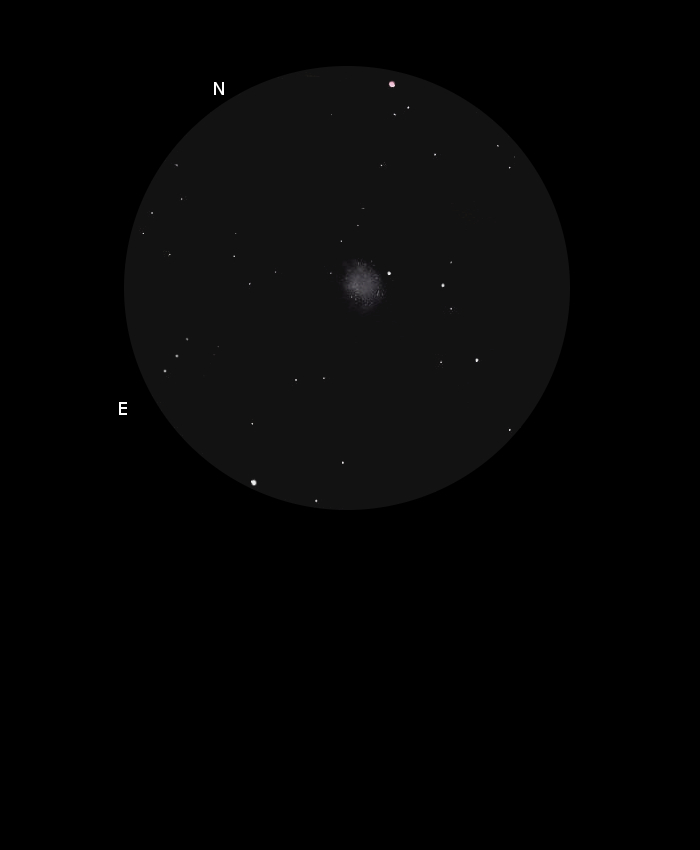
Nombre del Objeto: M-56; NGC 6779
Tipo de Objeto: Cúmulo Globular
Constelación: Lyra
Ubicación: La Hija de Dios, Ávila (España)
Fecha: 27-7-2014
Medios: Lapiz de grafito 0,5B, difumino, papel blanco y procesado con GIMP 2.8 para invertir
Magnitud visual 5 en el cenit con un cielo rural-urbano con noche estable y nada de viento
Telescopio: Refractor Acromático 152mm; F/7.9 sobre montura ecuatorial HEQ5 Pro y Ocular Televue 11mm; 109X; Campo Real: 1.1º
Saludos y gracias
Object Name: M-56; NGC 6779
Object Type: Globular Cluster
Constellation: Lyra
Location: The Daughter of God, Ávila (Spain)
Date: 27/07/2014
Media: Pencil graphite 0.5 B, stump, white paper and processed with GIMP 2.8 for inverting
Visual magnitude 5 on the peak with rural-urban night sky with stable and no wind
Telescope: Achromatic Refractor 152mm; F/7.9 on HEQ5 Pro equatorial mount and eyepiece Televue 11mm; 109X; Campo Real: 1.1 º
Greetings and thanks
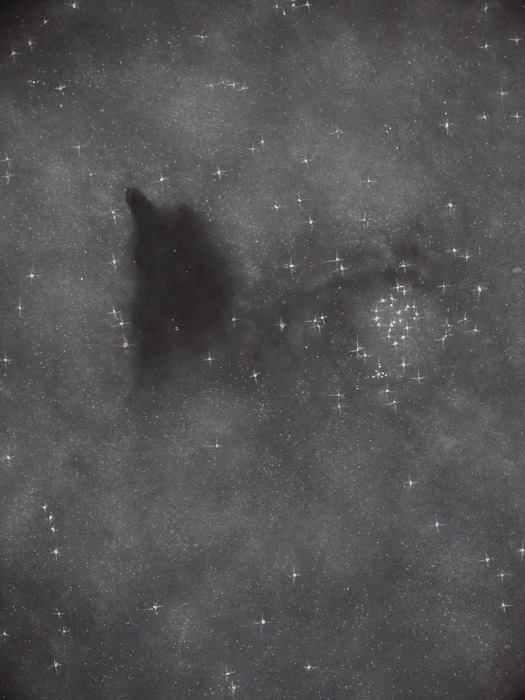
Hi all,
This was the first sketch I completed at Astrofest in Queensland, Australia. I’ve been wanting to sketch this beautiful dark nebula ever since I first laid eye on it some three years ago. This dark nebula, B86, goes by the popular name of “The Ink Spot”. It sits smack bang in the centre of the densest star cloud in the whole sky, the Cloud of Sagittarius. And what sets it off even more is B86 has a gorgeous bright open cluster right next to it, NGC 6570. Both objects are more-or-less the same size as each other, even though both are not very large themselves. But it is the juxtaposition of these two very different objects against the blaze of the Milky Way that makes this pair a spectacular pairing.
Dark nebulae are clouds of dust and gas that are drifting through the Milky Way galaxy. Many of these conglomerations of dust and gas do end up being formed into stars and planets, but most just end up forming the fabric of the galaxy. In fact, the stars that we see actually only form a small percentage of the actual mass of galaxies. By far the greatest amount of a galaxy’s mass comes from this very dust and gas. The Ink Spot is a small patch of cloud. It is a very opaque nebula too. Dark nebulae are categorised according to their opacity, or how dark they are. The scale of opacity goes from 1 (very tenuous) through to 6 (very opaque). While the opacity of The Ink Spot may be a 5, it is because that it sits in the Cloud of Sagittarius that makes is a striking object.
The little open cluster NGC 6520 really works very well in setting off B86. Open clusters are groupings of stars that are all related to each other having been formed out of the same parent cloud of gas and dust. Evidence for this is seen in the spectra of the stars displaying the same chemical make up. The brothers and sisters of our own Sun have been identified this way, with the same chemical signature as our Sun having been identified in several close by stars even though the Sun’s ‘siblings’ have long drifted off away from each other. Open clusters are loose groupings, so even though they formed from the same source, their gravitational connection to each other is not strong enough to keep the group together for too long.
For me, this tiny patch of sky is one of my most favourite. Tiny and oh so precious. Brilliant, dark, stark, ghostly. All in one. Gorgeous.
Alexander Massey.
Object: The Ink Spot, B86 & NGC 6570
Telescope: 17.5″ push-pull Karee dob
Gear: 13mm LVW, 154X
Location: Linville, Queensland, Australia
Date: 24th July, 2014
Media: Soft pastel, charcoal and white ink on A4 size black paper.
Duration: approx. 3hrs
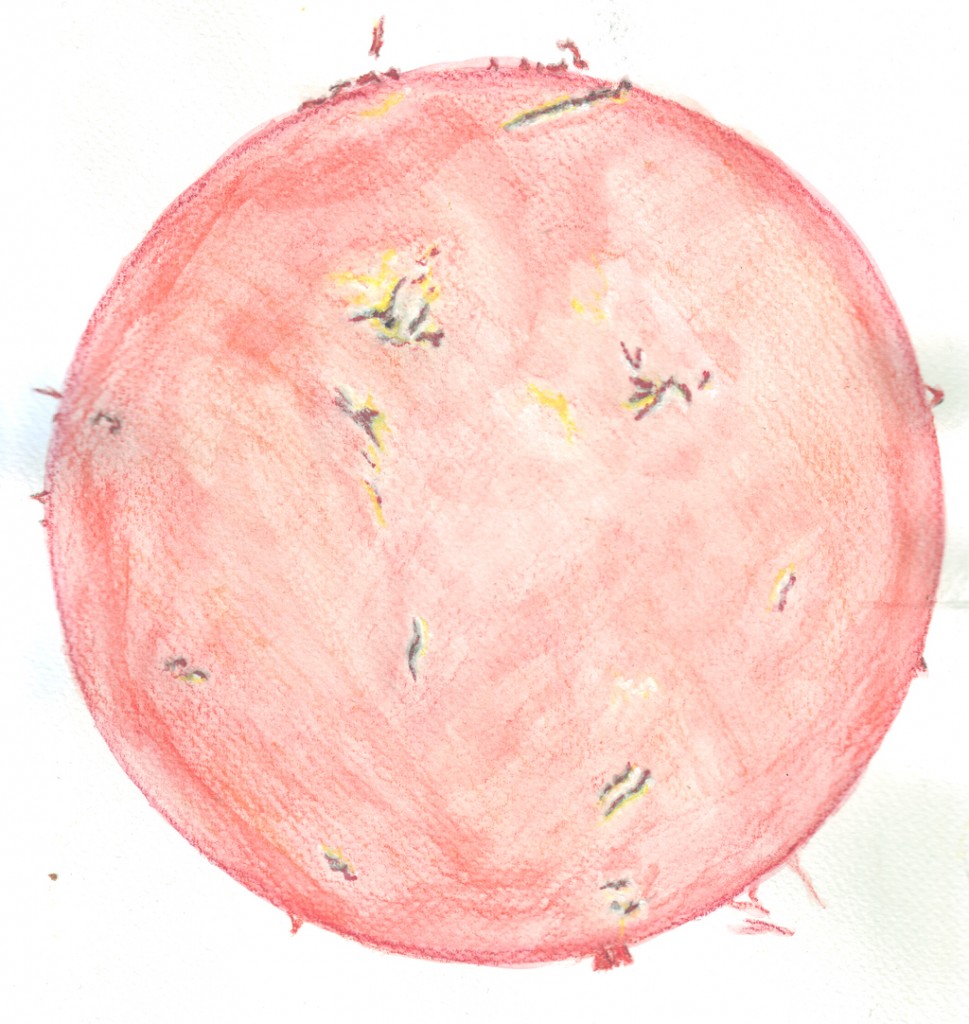
Date and time: 25th July 2014, UT 15:30
Place: Tarjan, Hungary (Astronomy Camp of the Hungarian Astronomical Association)
Equipment: 35/400 H-alpha Lunt LS35T, 12 mm
I used colour aquarel pencils on special aquarel paper.
Regards,
Judit
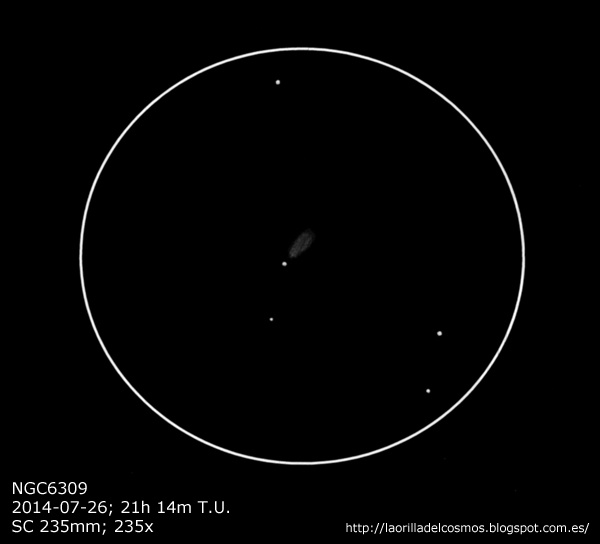
NGC6309 – Exclamation Mark Nebula
Object Type: Planetary Nebula
Location: Tarragona – Spain
NGC6309 is one of the two planetary nebula with the nickname “The Box”, (the other is NGC6445 in Sagittarius), but after my experience with it, I prefer name NGC6309 like Stephen J. O’Meara in his book “The secret Deep”: The Exclamation Mark.
For more details of my observation you can visit my blog:
http://laorilladelcosmos.blogspot.com.es/2014/08/ngc6309-nebulosa-planetaria-en-ophiuchus.html
Date and Time: 2014-07-26, 21h 14m UT
Telescope: SC Celestron 9.25″ (235mm)
Eyepiece: 10mm (235x)
White paper, HB2 graphite pencil, and scanned and inverted with Photoshop
Seeing: 3/5 (5 the best)
Transparency: Clear. Some wind. Rural Skies.
Location Constellation: Ophiuchus
Position: R.A. 17h 14m
Dec. -12° 54′
Thank you and best regards.